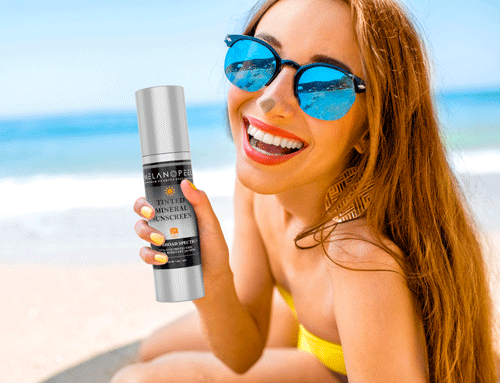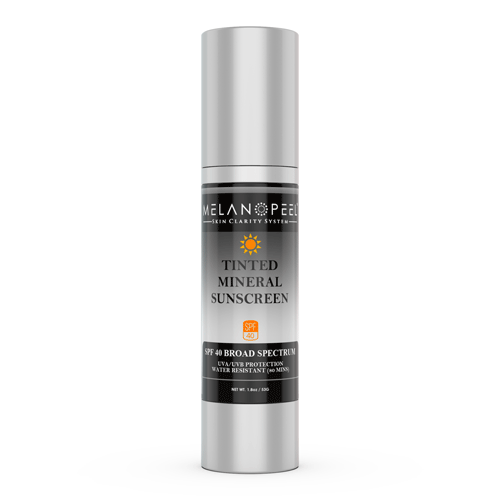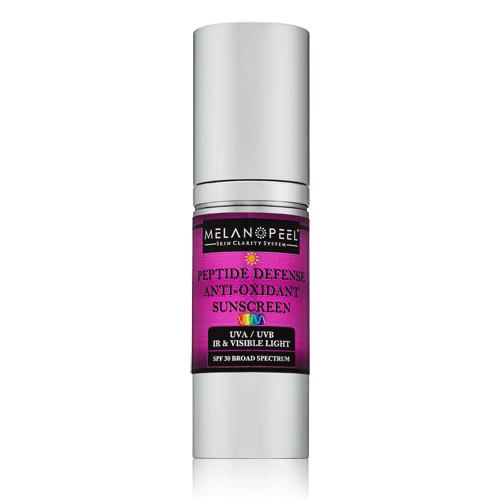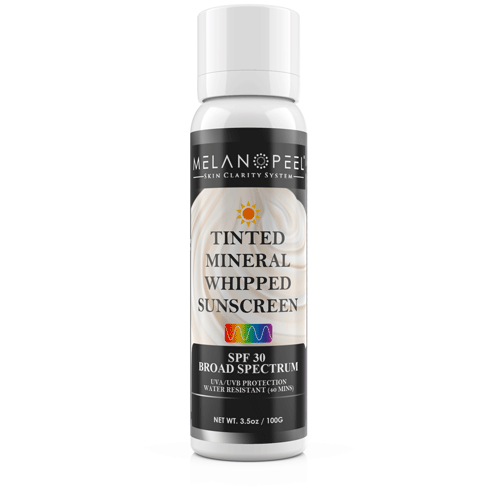Chemical & mineral sunscreens. It sounds like one sunscreen is more dangerous than the other! But are chemical sunscreens all bad and mineral sunscreens all good? Learn more about the differences between chemical versus mineral sunscreens.
The answer is that there is no ideal sunscreen – the best one is the sunscreen with a broad spectrum SPF of 30+ that you will use consistently. Read on to find out more.
Chemical sunscreens:
These are creams or sprays containing energy absorbing ingredients. The most common ones are avobenzone, homosalate, oxybenzone, octocrylene, octinoxate, and octisalate. Once applied to the skin, they are absorbed and form a barrier in the outer layer of the skin. The process of penetrating to sufficient layers takes about 20 minutes. For this reason, chemical sunscreens need to be applied 20 minutes before they can become active.
Once this sunscreen barrier is formed and you go out in the sun, UV light is absorbed, filtered and becomes converted to heat energy. Therefore the filtering effect reduces the amount of damaging UV light your skin receives.
While effective against UVA & UVB rays, the heat produced can be a problem to persons with sensitive skin, eczema, rosacea and those prone to hyperpigmentation.
Chemical sunscreens are lightweight and spread easily, without opaque whitening of dark skin. The downside is that these chemicals can be absorbed into the bloodstream, can cause allergenic photo reactive reactions (especially at high SPFs), are not safe for use on babies, and can damage our coral reefs.
Regarding the safety of chemical sunscreens, formulation matters. Chemical sunscreens have been around for decades effectively protecting skin from melanoma. Are they safe? Generally, yes. However, it is still best to avoid those containing oxybenzone (it can affect your endocrine system, and cause allergic skin reactions), parabens, oils and fragrances. Opt instead for lower SPF fragrance-free ones with antioxidants. There is little difference in the % UV protection of SPF 30 (97%) and SPF 50 (98%). No sunscreen, not even SPF 100 will give you 100% protection. So a well-formulated chemical sunscreen of SPF 30 with additional protective antioxidants is a good option for you.
Melanopeel®’s recommendation of a good quality protective sunscreen is our Peptide Defense Anti-Oxidant Sunscreen. Learn about why we love this formulation:
- SPF 30 without oxybenzone
- UVA & UVB protection
- Contains calming aloe
- Contains free-radical fighting antioxidants vitamins C&E
- Contains anti-aging peptides
Mineral (physical) sunscreens:
These use light-reflecting minerals to prevent UV radiation from damaging your skin. They stay on the skin’s surface and are not absorbed into the skin, The usual minerals are zinc oxide and titanium dioxide. Unlike chemical sunscreens, you are protected as soon as you have rubbed in your cream.

These minerals give you both UVA & UVB protection, they don’t clog pores, can be used on babies over 6 months, are less damaging to the environment than chemical sunscreens, and are much less likely to irritate the skin and cause breakouts. The downside is that they are a thicker white paste that leave a ghostly white look, especially on darker skin. They also do not provide as much UVA protection as chemical sunscreens, although they can adequately reflect UVA rays.
With a well formulated mineral sunscreen, the drawbacks can be overcome, such as with our tinted series of micronized (NOT nano-particle) mineral sunscreens. They provide excellent cosmetic coverage and adjust to all skin colors – from white to very dark skin. They are formulated with vitamins antioxidants C&E to boost their anti-inflammatory and free-radical fighting power against the sun. They are also oil-free, non-comedogenic, and recommended for acne-prone skin.
To read more about the full benefits of our mineral sunscreens, click here. Remember, the best sunscreen is one that you will use. It is the one that feels and looks good on your skin, that you will reapply as needed, and one that does not irritate your skin. Each person is different, so either chemical or mineral options can work for you.
Our sunscreen recommendations:
- Our Tinted Mineral Face Sunscreen SPF 40 can be used alone to mattify oily skin. It can also be used under makeup. Great for the beach and waterproof. It’s the perfect family sunscreen and can be used on children & babies over 6 months.
- Our Tinted Mineral Body Sunscreen SPF 40 can be used on both face & body and is a perfect waterproof family beach sunscreen.
- Use our Peptide Defense Anti-Oxidant Sunscreen SPF 30 as a day lotion under makeup. It provides both anti-aging and anti-inflammatory benefits while providing broad spectrum coverage. Non-irritating and formulated to be compatible with acne-prone and sensitive skin.
- Our Tinted Whipped Mineral Sunscreen SPF 30 is a face & body sunscreen with a lighter feel, and silky easy spread onto the skin. It can be used under makeup and gives excellent hydration balance to the skin.
Tinted Mineral Sunscreen Tinted Mineral Body Sunscreen Peptide Antioxidant Sunscreen Whipped Tinted Sunscreen










